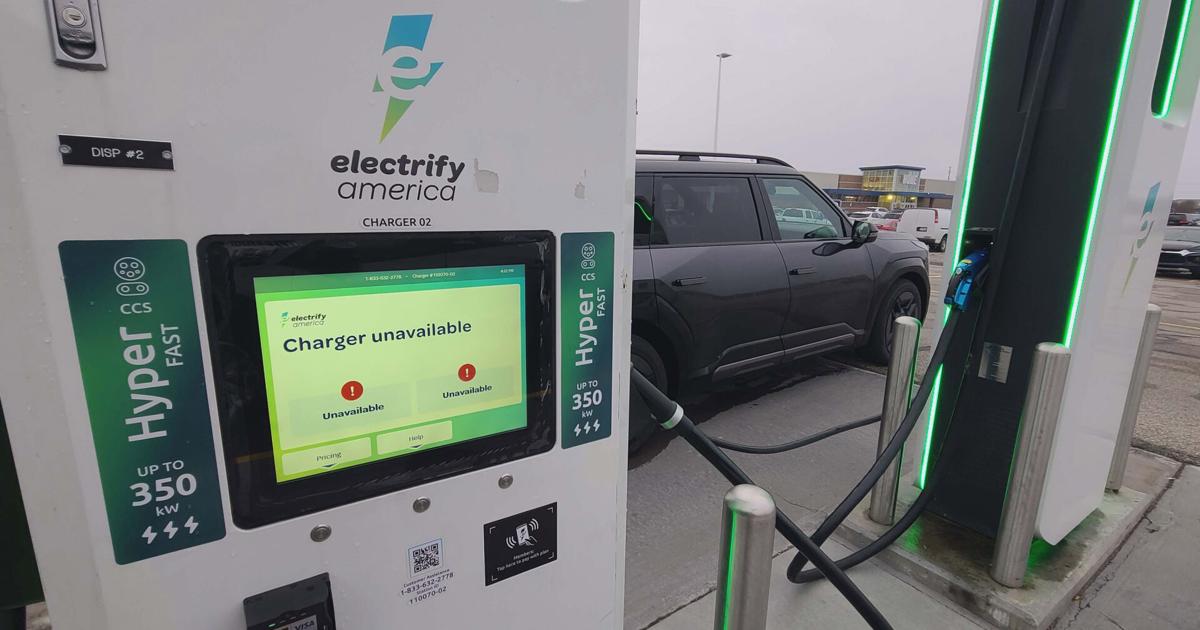
Anxiety over a transition to electric vehicles in America is high in the thousands of businesses, large and small, that have long supplied parts and equipment for cars and trucks powered by internal combustion engines (ICE).
ICE vehicles have many more parts than EVs, including radiators, fuel injectors, spark plugs and exhaust systems that aren’t needed in battery-powered vehicles. A Tesla, for example, has only about 20 moving parts in the power train, including a single-speed transmission without gears, compared with hundreds of parts in a gasoline-powered car.
The Specialty Equipment Market Association, which represents 7,000 mostly small suppliers, says about a third of its products are “ICE dependent.” Though gas-powered vehicles may be on the roads for decades, parts suppliers are starting to plan for a decline in annual sales, which totaled $52 billion in 2023 and translated into $337 billion of economic output, SEMA says.
“We’re not anti-EV,” said SEMA CEO Mike Spagnola, who led his members on a week of Capitol Hill lobbying earlier this month. But he argued that EPA regulations finalized in March, which aim to cut vehicle emissions of greenhouse gases in half by 2032, push the industry only toward EVs and not other options such as gas-and-electric hybrids, clean diesel and hydrogen vehicles.
“We just think there are multiple technologies based on your driving conditions and based on consumer demand,” he said. “To say it’s one technology and one style only, we think that’s a dangerous proposition.”
SEMA is urging Congress to pass a joint resolution disapproving the EPA rules, such as those offered by Rep. John James, R-Michigan, and Sen. Pete Ricketts, R-Nebraska. “We advocate for a rollback. We think it’s too much too soon,” Spagnola said.
“We’ll see new manufacturers sprout out, we’ll see old manufacturers go away. There’s always churn in any industry. That’s going to happen. It’s just the timing. To force it this quick is really dangerous. Let alone, consumers aren’t ready.”
Another major industry group, MEMA, the Vehicle Suppliers Association, has come out in support of the EPA regulations but also said the government needs to encourage other technologies such as plug-in hybrids “and not mandate application of a narrowly defined technology path to make a positive impact on the country’s urgent environmental goals.”
The potential impact of a transition to cleaner vehicles on suppliers is a matter of concern to the entire auto industry.
“It is just the fact there are fewer parts in an EV than there are in an internal combustion engine … that is naturally going to change things up,” said Scott Paul, president of the industry nonprofit Alliance for American Manufacturing. “This emphasizes the importance of a holistic policy that wants the entire supply chain to be in the United States as much as possible from start to finish.”
There’s plenty of time to help suppliers make the transition since EVs are still only about 10% of the more than 15 million new vehicles sold in the United States each year, said Ellen Hughes-Cromwick, senior resident fellow in the climate and energy program at the left-center think tank Third Way and a former chief economist at both Ford Motor Co. and the U.S. Department of Commerce.
“Nobody’s turning their back on these mom-and-pop shops and saying go fish,” she said. “We have got to be part of their future as well. We absolutely owe them that as we make this transition.”
Funding the transition
The Biden administration announced in early May that the Department of Energy will provide $100 million to help automotive suppliers prepare for the future.
Half the funds will go into state partnerships that provide grants to help small and medium-sized suppliers convert from internal combustion engine parts to the EV supply chain. The other $50 million will be grants for suppliers to “kickstart manufacturing diversification and conversion projects.”
A Deloitte study last year said the transition will be challenging for many suppliers.
“The pressure to innovate grows every day, and suppliers increasingly find themselves on the front lines as vehicle manufacturers push the responsibility to develop new technologies back through the value chain,” the study said. “However, some suppliers have struggled to keep up with the cost and pace of change, leaving them vulnerable with more change on the horizon.”
Another 2023 report by L.E.K. Consulting said there will be opportunities for suppliers to shift gears, including by remanufacturing batteries that need replacement and developing braking systems and tires that work better and last longer in heavier vehicles.
“Providers should act now to adjust their portfolios to reduce exposure to systems cycling out of use and to align business goals with a higher share of aftermarket systems for (battery electric vehicles),” the report said.
“The ones that don’t prepare for the transition will have the hardest time,” said Alan Taub, a former auto executive who is now director of the Electric Vehicle Center at the University of Michigan.
That includes planning not just for EVs, but also for so-called connected vehicles and self-driving cars and trucks, Taub said.
“What that means is the whole design of a vehicle can change,” he said. “Companies are now calling themselves ‘mobility providers,’ not vehicle manufacturers. So when you have three parallel technology transitions occurring at Silicon Valley speed, there are so many opportunities to reinvent the vehicle.”
Valerie York contributed to this report.
